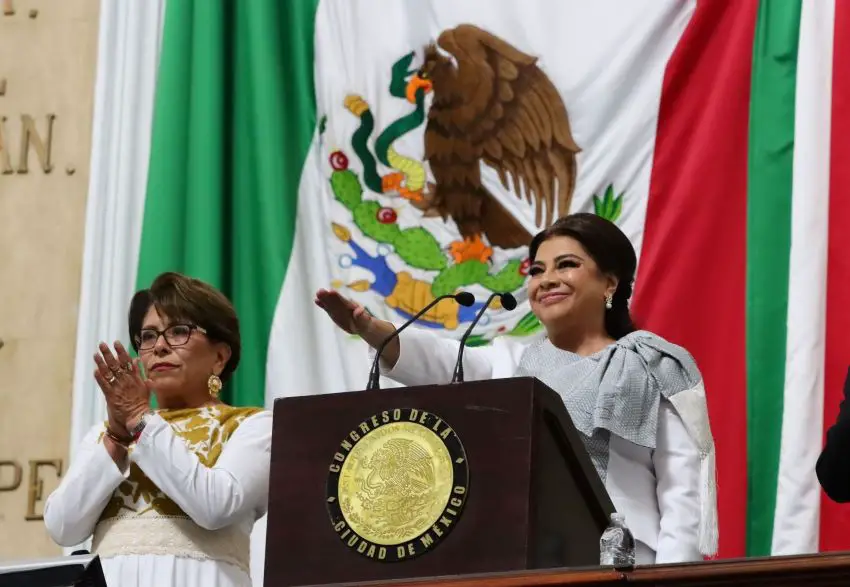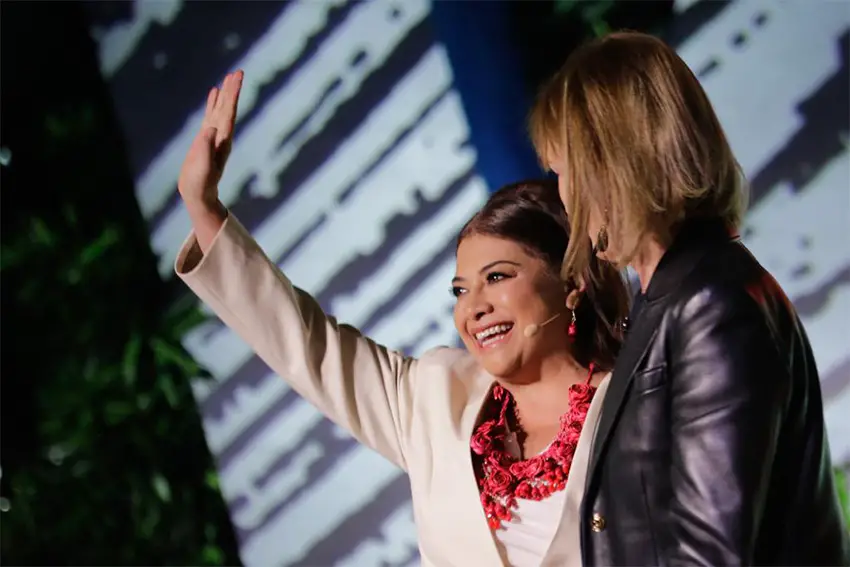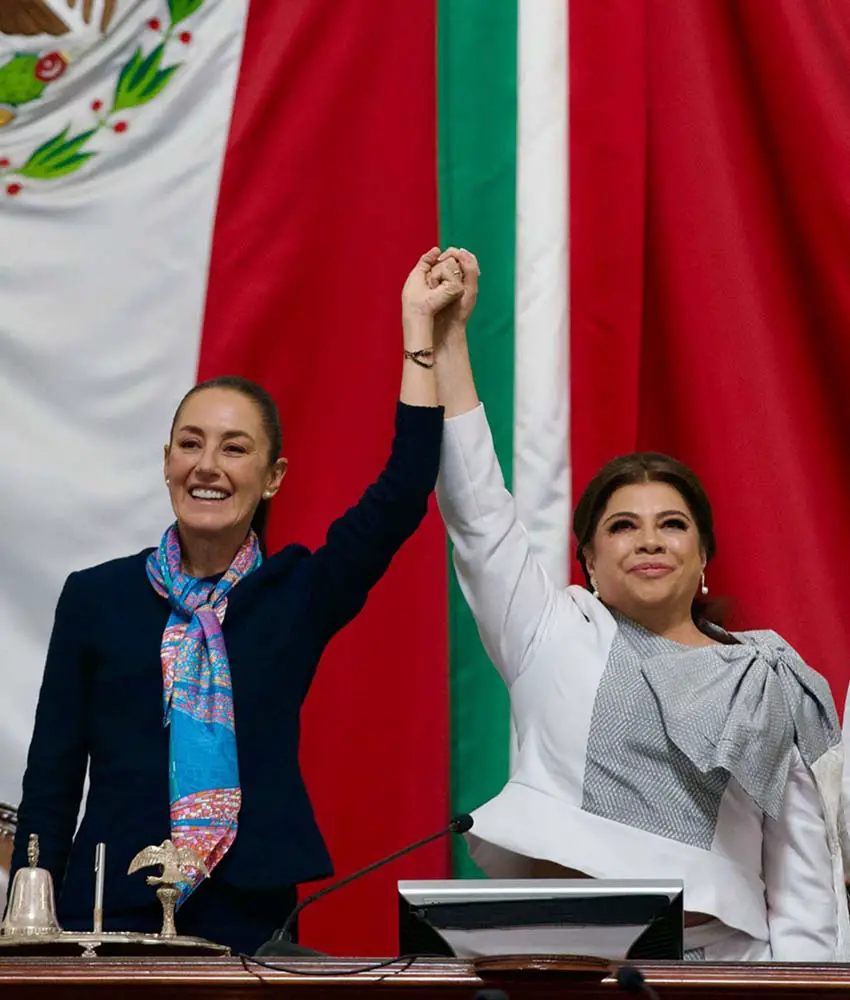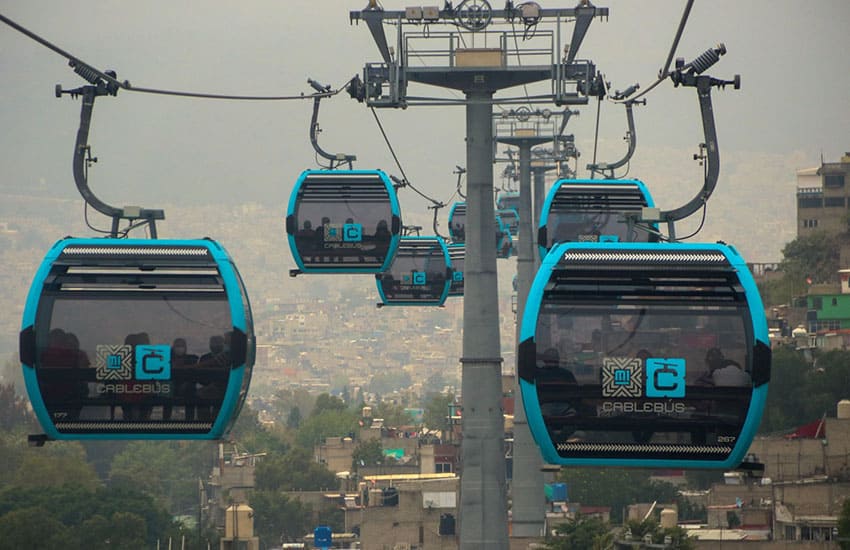Mexico City Mayor Clara Brugada spoke at the Bloomberg CityLab Summit in Mexico City on Tuesday, 10 days after she took office as the capital’s second elected female mayor.
Brugada, who twice served as mayor of Mexico City’s Iztaplala region before winning mayoral elections this year, will rule the capital for the next six years, continuing the Morena party’s rule in the country’s largest city.

He replaced Mexico City’s interim mayor, Marti Batres, who replaced then-mayor Claudia Sheinbaum after she resigned to run for president.
Here are some highlights from Brugada’s speech Tuesday to a host of fellow mayors from countries around the world.
‘It’s time for women’
Echoing the words of former Mexico City mayor and new Mexican President Claudia Sheinbaum, Brugada stated that “it is time for women in this country and in the world.”
Mexico, he said, is currently in a “historic moment,” considering that the country has its first female president.
Brugada emphasized that the “it’s time for women” declaration does not only apply to political representation, but is also a commitment to improving the lives of all women.

She emphasized that achieving gender equality is “one of the most important priorities” for her, and for Sheinbaum.
“So, together with women, we are building a big, substantive equality plan for Mexico City,” Brugada said.
“To me, ‘it’s time for women’ means it’s time to provide justice to women, and this means public policies that put the eradication of gender inequality at the center,” she said.
Caregiving could be a ‘public responsibility’
Further outlining his plans to provide justice to women, Brugada said that one of his administration’s “fundamental” goals is to create a “public service system in Mexico City.”
“This is very important because it is a new way to rethink cities,” he said.
Brugada said his proposal means “no longer thinking that health care is just a private task,” and explained that his government would build new public infrastructure where children, the elderly and people with disabilities can access care services, thereby reducing the pressure on their caregivers At the moment. the majority of them are women.
“We will create a strong one [caregiving] infrastructure that includes more than 200 child care and development centers,” Brugada said, “… but also child care centers for senior citizens, rehabilitation centers for people with disabilities.”
By building adequate infrastructure, healthcare can become a “public responsibility” and not a private one, Brugada said, adding that access to municipal care services would be a “right” for citizens and municipal governments would have an “obligation” to provide services the. such services comply with the constitution of Mexico City.

The ‘second story’ of CDMX transformation
“Our task is to build the second story of this great urban transformation,” Brugada said, again borrowing the discourse of President Sheinbaum, who said his administration would consolidate Mexico’s so-called “fourth transformation” (4T). initiated by former president Andrés Manuel López Obrador.
“… What does that mean? [It means] building a peaceful and equal region, deepening the security model close… to the people,” he said, referring to the police strategy.
This means continuing with a [security] a model that has borne fruit,” Brugada said, citing a nearly 60% drop in high-impact crimes such as homicides during the previous Mexico City administration.
He also highlighted the importance of using technology in efforts to fight crime.

More environmentally friendly and time-saving transportation is coming soon
Before emphasizing the importance of continuing to build new transportation infrastructure, Brugada told the Bloomberg CityLab Summit that 78% of Mexico City residents regularly use public transportation to get around the capital.
He highlighted his promise to build five additional cable cars (cable bus) transportation lines that connect neighborhoods (especially disadvantaged ones) with other transportation services, such as the Mexico City Metro.
He also promised to build additional bike lanes and continue investing in electromobility, or e-mobility, in Mexico City, where many electric buses already operate.
“We want the main force of transportation in Mexico City to be sustainable,” Brugada said.
“We will continue with electromobility [initiatives]we will continue to build accessible and sustainable infrastructure that reduces transportation time. “In this city, we want people to be able to have fun with their families instead of spending hours on transportation,” added the mayor.

Problem requires ‘metropolitan solution’
Brugada highlights that its population is 16 people mayor’s positionor region, in Mexico City has a population of about 9 million people, and about 22 million people live in the capital’s metropolitan area.
The problems affecting Mexico City impact the entire metropolitan area, he said.
“We cannot think about issues like air, … water and security without having a metropolitan vision,” said Brugada, who has pledged to work closely with Delfina Gómez, governor of México state, where a large number of cities are in the Mexico City Regional metropolitan area. is at.
The mayor acknowledged that “one of the fundamental issues for this city is water” and vowed to change the way water is managed to reduce waste of vital fluids.
Brugada also spoke briefly about waste management, and told conference participants that about 13,000 tons of waste are generated in Mexico City every day.

“Within six years, we propose to recycle half of all Mexico City’s waste. This is very important. … We have a method, which is a large recycling plant,” he said.
A new ‘Utopia’ is about to arrive
Brugada is perhaps most famous for its “Utopia” community center project, which provides free athletic, recreational and educational opportunities in underserved areas.
On Tuesday, the former mayor of Iztapalapa spoke about his government’s plans to build 100 “beautiful” additional buildings. Utopia across the capital.
“The city is planning a major project for the transformation of public spaces,” Brugada said.
“… What’s that Utopia? … [They are] a great and transformative project that has infrastructure for sport, recreation, culture, wellbeing and care,” he said.

Brugada said that 100 new Utopia will be built in the parts of the capital that need it most
In accordance with the 15-minute city planning concept, Utopia will be positioned so that many Mexico City residents can reach it in less than 15 minutes from their homes, he added.
“That Utopia is our big bet [achieving] equality, to realize social and territorial justice in this city,” said Brugada.
“I come from a remote area [of the city]so one of the big goals we have is that remote areas in Mexico City are not synonymous with inequality and neglect,” he said.
A city of ‘shared prosperity’
Brugada noted that Mexico City has the largest economy of any city in Mexico, and set out a broad economic vision for the capital.
“We want this city to continue to be a prosperous city, a city with shared prosperity, a city that generates income accompanied by responsibility for the environment, a city where we see the best social program is employment,” he said.
The mayor also said he wants his government to be “a great digital government, an open government and a promotional government [internet] connectivity and modernity.”
Referring to López Obrador’s 4Ts, Brugada added that Mexico City is Mexico’s “capital of transformation.”
“This is a global, cosmopolitan and diverse city,” he told conference attendees from around the world.
By Mexico News Daily chief staff writer Peter Davies ([email protected])






